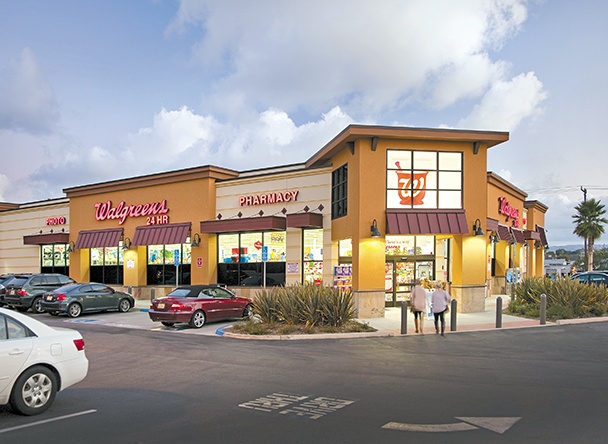Retail Report: Low-Price Loyalty, Effectiveness of Sin Tax
by September 12, 2016 12:02 am 337 views

Kroger Considers Takeover of
Some Rite-Aid, Walgreens Stores
Drugstore giants Rite Aid and Walgreens announced a merger last year, an arrangement that is still in process. Because of the merger, the companies will have to divest from 500 store locations. Some reports indicate that The Kroger Co. may be interested in taking over some or all of these stores.
Kroger has been quite busy lately in its efforts to remain a dominant player in the ultracompetitive grocery industry. Last year the grocery giant took over Roundy’s, the parent company of popular Midwest chain Mariano’s.
Now, some analysts believe that Kroger could benefit from taking over established drugstores in a bid to establish itself in that niche as well.
“That’s where Kroger could come into play. Kroger is primarily a grocery store chain, but it’s also the nation’s fifth-largest pharmacy operator. It has 2,200 in-store pharmacies. An acquisition of some of the Walgreens/Rite Aid stores would boost its pharmacy business. It could also use the sites — typically in prime locations — and surrounding real estate to build supermarkets. It could even use some Walgreens/Rite Aid sites to open urban supermarkets, a trend Kroger has been capitalizing on recently,” according to a report in the Cincinnati Business Courier.
Another concern for Kroger is competing with the grocery initiatives at big-box stores like Wal-Mart Stores Inc. and Target. Kroger has already made headlines for its decision to cut prices on many staples while also increasing the availability of online grocery ordering. Expanding its pharmacy footprint could have significant benefits in Kroger’s ability to maintain brand visibility and loyalty.
There is no confirmation yet from Kroger, Walgreens or Rite Aid regarding a possible acquisition, so the current conversation remains speculation.
Soda ‘Sin Tax’
Proves Effective
Over the past several decades, doctors, dietitians and public health officials have pondered ways to get people to consume less sugar.
Overconsumption of sugar has been connected to the obesity crisis as well as a host of medical conditions, including diabetes. One proposed solution is levying “sin taxes,” such as those levied on alcohol and tobacco products, to sugary foods and beverages. The idea is to make the cost of unhealthy food prohibitive so as to encourage consumers to make better choices.
The proposed taxes have been controversial, with some critics arguing that the surcharge reflects a nanny state approach to individual behavior choices. Other critics note the tax mostly affects the poor, while middle-class and wealthy consumers can easily absorb the additional cost of enjoying a Coke or a bottled sweet tea.
This effort to tax unhealthy products has continued, however, and a recent study from Berkeley, California, demonstrated that a soda tax may well be an effective deterrent to sugar overconsumption.
The Los Angeles Times reports that after a one-cent-per-ounce tax was levied on sugar-sweetened drinks, consumption of the beverages dropped significantly. In addition, bottled and tap water consumption increased dramatically.
“Five months after the city implemented its penny-per-ounce tax on all manner of sugar-sweetened beverages, lower-income residents had reduced their consumption by 21 percent, compared to the pre-tax days. Meanwhile, their counterparts in neighboring Oakland and San Francisco increased the amount of sugary drinks consumed by 4 percent during the same period, according to a study published Tuesday in the American Journal of Public Health,” the L.A. Times reported.
“Instead of swilling as much Coke, Gatorade, Red Bull and Hawaiian Punch, the Berkeley residents boosted their water consumption by 63 percent. In the neighboring cities, low-income residents drank only 19 percent more water during the study period,” according to the story.
While this news may not make soda manufacturers happy, particularly if other municipalities follow suit with their own taxes, it’s not bad news for some businesses. Suppliers of bottled water, water filtration products and unsweetened beverages can capitalize on these taxes by marketing their products to residents reducing their consumption of sweetened drinks.
Are Off-Price Shoppers Loyal
To Stores or Low Prices?
Many savvy shoppers swear by off-price stores. While there has been some debate over off-price pricing policies and product quality, many consumers appreciate the ability to buy apparel and other goods at ultra-low prices.
T.J. Maxx is one example of an off-price empire that continues to impress with its success. Its stores are cavernous and offer shoppers an enormous range of clothing, housewares and gifts. Also, T.J. Maxx has an e-commerce site, something that is a rarity in a niche that boasts limited supplies of discounted goods. Its parent company continues to open additional stores and earnings are solid.
However, it’s not at all clear that T.J. Maxx’s success is due to throngs of loyal customers who truly love the T.J. Maxx brand. T.J. Maxx shoppers are clearly willing to shop at its stores and on its website, perhaps because of the quality of its stores and online shopping experience. But that may not be enough to maintain the brand’s momentum, a recent article in Fierce Retail notes.
According to the article, analysts at Checkout Tracking report: “There seems to be little loyalty among consumers to specific off-price retailers.
“T.J. Maxx buyers gave T.J. Maxx 4 percent of their apparel wallet, while giving 3 percent to Marshalls and 2 percent to Ross. Marshalls buyers give 5 percent of their apparel wallet to that retailer, while giving 3 percent to T.J. Maxx and 2 percent to Ross. Nordstrom Rack buyers give 5 percent of their apparel spend to that chain, while giving 3 percent each to T.J. Maxx and Marshalls.”
This indicates that shoppers who are concerned about controlling costs may not be able to afford store loyalty. Instead, they are going to shop where they can get the best deals though there may be other factors that affect shopping decisions, such as store location and convenience. Off-price and discount retailers may need to take additional steps to attract customer attention and to secure loyalty.
